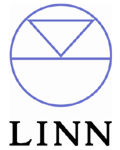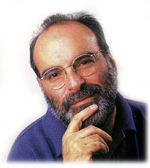
In This eNewsletter:
• How to Revive High-End Audio, by John Atkinson
• Digital Radio Sucks—It's Official, by Ken Kessler
 |
In This eNewsletter: |
 How to Revive High-End Audio, by John Atkinson How to Revive High-End Audio, by John Atkinson
When I became Stereophile's editor in 1986, the median age of the magazine's readership was the same age as I was then, 38; ie, half the readers were younger than 38, half older. According to our most recent reader survey, the median reader age is now 48, meaning that in the intervening 19 years, that median reader has aged at half the rate of the rest of us. A nice trick. But older that reader certainly has become, which has led to cries of doom from some quarters of the audio industry. The fear is that as members of the baby-boom generation increasingly look backward at their 50th birthdays, they will equally increasingly remove themselves from the market for two-channel audio components. Couple that fear with the observation that younger generations neither appear to value quality nor appear to be willing to devote extended periods of time to listening to music without multitasking, and it would seem that the customer base for the high-end audio industry will soon, literally, die out. And, as Stereophile correspondent Ken Kessler wrote in an article in the September 2005 issue of UK trade journal Inside Hi-Fi & AV, the high-end audio industry faces obstacles in reaching its existing customer base. Ken's thesis is that, whereas acknowledged luxury markets exist in many fields, from watches to cars to handbags to pens, audio alone seems to be associated with a sense of consumer guilt—that when conspicuous consumption involves expensive loudspeakers or amplifiers, it is to be condemned. Buy a Patek Phillipe or a Porsche Cayenne and your neighbors will be impressed, or at least not regard you as crazy. But spend that same money on an amplifier or a pair of speakers and, as a Stereophile reader recently wrote me when canceling his subscription, "With all the crap going on in the world and you clowns are stressing over the next platinum-coated piece of electronics . . . You all should be ashamed of yourselves." This reader was angered by Michael Fremer's admission that he had purchased the review samples of the Wilson Audio Specialties MAXX2 loudspeaker, which he had reviewed in August, and it was Michael Fremer who pointed out to me another example of this paradox a few months back. In a single weekend issue of the New York Times, one writer enthusiastically extolled the benefits of $600 table place settings on one page, while on another page, amid a survey of headphones, another writer cautioned his readers that though one particular model sounded superb, it was ridiculously priced at $300. The Times apparently feels that headphones costing the same as a spoon and couple of forks are too pricey to be recommended. The fault lies not just in the Times' choice of writers, but also in the way the high-end audio industry has failed to communicate its message to anyone other than those who have found their own ways to its offerings, as well as the fact that, as I pointed out in a speech I gave at a dinner in Chicago celebrating Stereophile's 30th anniversary, traditional audio retailers are more like fishermen than farmers. Unlike the former, the latter actually prepare for next year's crop, and do not assume that customers will come along of their own accord. That speech was given in 1992, and it is now at least twice as long ago as that when I first began to hear about this problem. One major attempt to address it was when the audio industry formed the Academy for the Advancement of High End Audio, or AAHEA, at the end of the 1980s (see my June 1991 "As We See It"). But a decade later, AAHEA collapsed under the weight of its own inefficiency and internal contradictions (see Art Dudley's November 1998 "As We See It"). Now there will be another attempt. What triggered this essay was a letter I received on October from four industry veterans who are attempting to do something about the apparent malaise. I reproduce the text of that letter below. Let me know what you think of their suggestions as well as what suggestions you have of your own. Open Letter: A call to action for the High-End Community So . . . are the doomsayers right? Is high-end audio headed for extinction? Is it true that people no longer respond to high-quality music reproduction? Not at all. But it's up to us to prove the doomsayers wrong. And we can. This is an invitation to join "The A5"—The American Association for the Advancement of the Audio Arts. We're setting up as an LLC run by a board of directors. On our own, as individual companies, we can do little to improve public awareness of high-end audio. Working together—manufacturers, distributors, reps, retailers, reviewers—we can turn the public on to one of life's great pleasures (and our passion): great music combined with stunning sound. Things are not so bleak. • People are still buying music and listening. Look at the iPod phenomenon and the growth of satellite radio. These listeners are excited about music in their lives. It's up to us to turn more of them on to high-quality music reproduction. It's less of a hard sell than it looks. People are already sold on music! To put it another way, Apple Computer, XM, Sirius, and the like are creating potential customers . . . for us! • Despite a lack of growth in high-end sales, our industry is more innovative than ever before. Take any product category, any price point in specialty audio: the performance of products today is at an all-time high. The Golden Age of Hi-Fi? This is it! • What will the A5 do besides collect your dues? Well, one thing we won't do is hold an annual awards dinner. The A5 is not about self-congratulatory hype. What we propose to do is real. We aim to act, and here are some of the ways: • Set up a website that directs visitors to the messages, products, and services of our members. • Set up a user group for our members so we can communicate more freely and share ideas. • Create the conditions for freer communication among all of us . . . and this includes the end user. • Forget unproductive controversies, like the objectivist versus the subjectivist camps. There's room for both. And the truth is, one does not have to exclude the other. • Make the buying public aware of the benefits of value-added service. We can prevent high-end from turning into a commodity. Look at the job that luxury car makers do, or Swiss watchmakers! • Focus our message and get it to the public through whatever means we can muster and ways we can think of. • Place ads for our industry in upscale magazines like Forbes, Wine Spectator, and Architectural Digest, to name just a few. We will advertise in new venues outside of our industry. • Run a weekly program on high-end audio for cable television, PBS, or a program for public radio. • Demonstrations at concert halls, museums, music schools. • Regional shows or events at music-educator societies, Mercedes and BMW clubs, jazz or folk festivals. • Events at fine restaurants. Have a good meal, meet some interesting people. Hear some great sound. (There are people who never go to shows, who don't like crowds. Let's reach them!) • Create a public relations campaign for our industry as a whole—including articles that we could send to newspapers looking for free content. If we are not blatantly trying to promote certain brands (not the goal), this will work! • Training programs for salespeople. How to do a good two-channel demo. How to demo both home theater and great music, creating more excitement for both! The initial response to A5 has been gratifying, and we are just getting started. We need you in at the start. There's strength in numbers. Power, too. There's something else in numbers: confidence. The A5 will give members the confidence that we are (finally) taking matters into our own hands and doing something about the vitality and future of our industry. We need your support and ideas. If not you, who? If not now, when? Please e-mail us your thoughts.
Our Best Regards; |
 |
The Linn Unidisk 1.1 How to audition the only product to receive three Stereophile Product Of The Year Awards in 2004!:
• Stereophile Joint Product of the Year 2004 To find your nearest Linn dealer for an audition of this remarkable product, email: helpline@linninc.com |
||||
 Digital Radio Sucks—It's Official, by Ken Kessler Digital Radio Sucks—It's Official, by Ken Kessler
Digital radio has been force-fed to the British public for a few years now, making small fortunes for the hardware manufacturers, who have enjoyed a sales boom that is a miniature of the immense enthusiasm for Apple's iPod—not tens of millions, but let's just say that "not a few" digital radios have been sold. And, as with any new technology not yet fit for public consumption, the current and intensely thick British government loves it. Moreover, they're itching to shut down analog broadcasting. Thus, the UK has been leading the charge with digital audio broadcasting (DAB), which anyone with ears will tell you sounds even worse than the first CDs. Indeed, when I compared the hottest stereo tabletop set to a mono Tivoli radio for a selection of non-audiophile friends, everyone preferred the Tivoli. It would seem that people with halfway decent hearing are prepared to forgo such niceties as scrolling displays that tell you what's being played, "rewind" facility, infinite presets, and other features unique to digital radio. Make no mistake: the digital radio I've heard so far is faster at inducing listener fatigue than any other music playback format I've ever auditioned. Now, at least a few of the chickens are coming home to roost. While wiser heads have been shaking in dismay, realizing that digital radio is a fait accompli—why waste your breath championing analog radio against a left-wing behemoth?—assistance has come from an unlikely corner: the UK's Advertising Standards Authority. Ordinarily, the ASA is the sort of body that slaps the wrists of companies that, for example, say their hamburgers weigh 4oz when they weigh only 3oz. This invariably results in the deceptive advertisement being altered to read, say, "4oz (before cooking)," the parenthetical clarification printed in three-point type. The ASA deals with hundreds of complaints. They're one of the more useful watchdogs working on behalf of British consumers because they don't like advertisers getting away with bogus assertions. Their latest effort not only slammed claims about digital radio, it even made the national newspapers. Under the headline "Digital Radio Fails to Clean Up the Waves," London's Daily Mail (October 5, 2005) reported that the ASA condemned a radio ad, provided by the radio group Switchdigital, that claimed that digital radio gave "crystal clear sound . . . distortion free." The ASA upheld a complaint by a listener who said that, "While it was free from the hiss or crackle of old-fashioned analogue radio, there was still a 'gurgling noise'." Better still, the ASA found "no evidence to show that digital radio was superior to analogue in terms of audio quality." Bloody hell—a mainstream British broadsheet reading like a column by Mikey Fremer! I read on to learn that there had been some immediate backpedaling. The Digital Radio Development Bureau said that digital broadcasting's main selling point "was the extra choice it offered, rather than better sound." After all of the acres of bullshit I've read about the sound quality of DAB for nearly a decade? Could've fooled me. I went to the ASA's website, where the complaints are published along with the organization's verdicts. I don't want to rob any of you of the joy of savoring the entire judgment, so I will only sum up its primary components: According to the ASA's October 5, 2005, adjudications, three complaints were filed against a radio ad promoting DAB digital radio that stated, "If you're someone who thinks an iPod is something you might keep your contact lenses in, you probably haven't heard about DAB digital radio. With a new digital radio costing from as little as £49.99, not only can you hear all your current favourites in crystal clear sound, you can switch on to a dial-full of digital-only stations specialising in everything from classic rock to books that talk. The future is here today with distortion free DAB digital radio: taking the hiss out of the way you listen to the radio. Message provided by TWG Emap Digital." One listener complained that the claim "distortion free" was misleading, which was not upheld—the ASA felt that most listeners would take "distortion free" to mean merely the absence of interference. More important, the ASA said that "The ad did not claim that DAB digital radio duplicated the original sound of recordings." Two other complaints, though, were upheld, including one that argued that "the claims 'distortion free' and 'crystal clear' were misleading" because, although the listener accepted that DAB digital radio was free from "hiss" or "crackle," he believed that a "gurgling noise" permeated the sound. The second complaint stated that the ad implied that DAB digital radio resulted in audio quality superior to analog radio. In response to the complaint that "the claims 'distortion free' and 'crystal clear' were misleading," the ASA did its homework and studied DAB under all conditions, not just the ideal ones usually cited by pro-DAB factions. Addressing signals that were too "high" or too "low," the ASA agreed that such conditions "could lead to the sort of 'bubbly' or 'gurgling' problem highlighted by the complainant." But it was the last complaint, about digital vs analog, that should inspire many audiophiles and music lovers to raise a glass to the ASA, and this I will reproduce in its entirety. Note that this particular digital supporter hides behind the word subjective when, in most cases, subjective is the very epithet used by digiphiles to damn and discredit pro-analog audiophiles. "Switchdigital said that many analogue radio stations compressed the sound they transmitted to produce a 'richer' and 'beefier' sound, which some listeners preferred. They said that DAB replicated to near perfection a more natural sound that was closer to the reality of the original audio. They said that the assessment of audio quality was a subjective issue, which came down to individual listener choice. "We [the ASA] believed the ad would be understood by listeners to mean that DAB digital radio was superior to analogue in terms of audio quality, particularly since the benefits of DAB were set in contrast to problems that affected analogue ('taking the hiss out of the way you listen to the radio'). We received no evidence to show that DAB digital radio was superior to analogue radio in terms of audio quality. We therefore concluded that the ad was misleading. "The ad was in breach of CAP (Broadcast) Radio Advertising Standards Code section 2, rule 3 (Misleadingness)." If an occasional reminder that sometimes the good guys win might amuse you, then I heartily recommend that you download the relevant pdf file. Scroll down to page 7, to the item about Switchdigital. Print it out, then sit back and enjoy it: maybe there really is someone looking out for audiophiles. |
 |
DLP...SEE IT Is Your Guide To Everything DLP Go inside the technology and find out how DLP microdisplays work. Get all the latest information about DLP televisions and projectors. Learn the difference between DLP displays and the other technologies on the market. Use our shopping tips to help find the best television for your budget. Whether you're a home theater enthusiast or a beginner, DLP...SEE IT has the info you need. Sponsored by Texas Instruments, Toshiba, Samsung, Mitsubishi and SIM2. To learn more, go to www.dlpseeit.com. |
||||
| To unsubscribe, simply reply to this email with the word 'unsubscribe' in the subject or body of the email. |
| Subscribe To This Newsletter • Stereophile Home Page |
| Print & Web Media Kit • Privacy • Contact Us • Letters to the Editor |
| Subscribe to Stereophile Magazine |
| Copyright © Primedia Magazines, Inc. All rights reserved. |